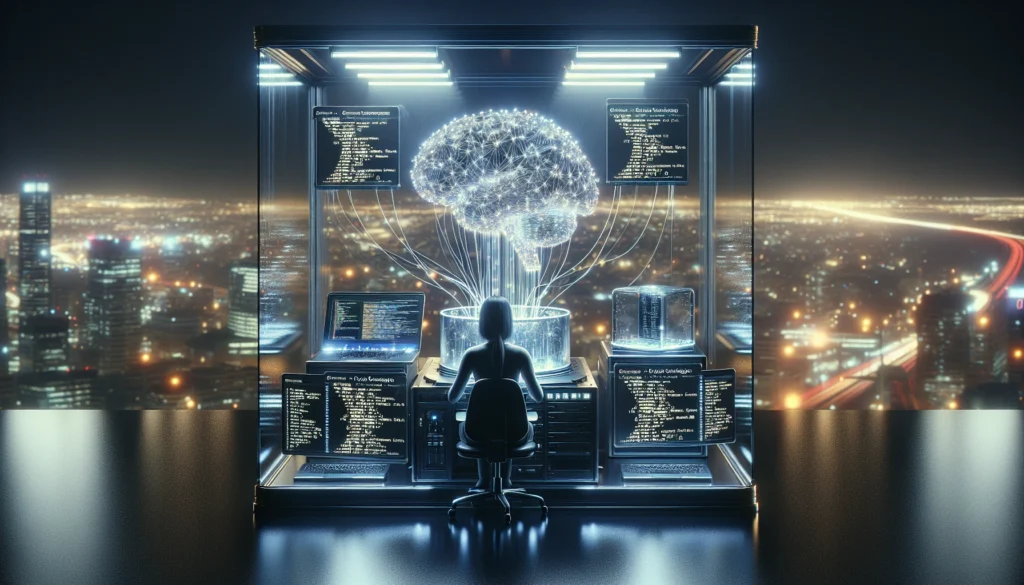AI’s Next Upgrade: Code Accountability You Can Trust
The Productivity Boom Meets a Trust and Accountability Recession
AI coding assistants are spectacular at turning ideas into shippable code. They’re also spectacular at hiding the trail of where that code came from. Lack of code accountability. That’s the paradox we’ve created: models trained on millions of public repos accelerating output—while obscuring provenance, licensing, and patch paths. As someone who’s built SaaS startups on open source, I love the speed. I don’t love blind spots that turn into legal and security debt.
Open Source Built the Brain—It Deserves Credit
Roughly 70% of a typical application is open source. Modern assistants learned from that commons, then shipped as closed models with little visibility into what’s being reused. When suggestions blend code patterns from incompatible licenses, you can inherit obligations you never intended. Worse, there’s no native mechanism to trace AI-inserted snippets back upstream when a CVE lands. That’s not a philosophical gripe—it’s supply chain risk.
Speed Without Safety Is a Regress
Snyk’s 2023 data says over half of developers frequently hit security issues in AI-generated code. No surprise: train on the wild, inherit its warts. We’ve seen models confidently propose vulnerable patterns, outdated APIs, and quietly introduce injection points. Productivity gains are real—but so is the potential blast radius when those suggestions go straight to prod without the same scrutiny you’d apply to any third‑party dependency.
Don’t Ban AI—Make It a Good Open Source Citizen
The contrarian take: the answer isn’t prohibition. It’s discipline. Treat AI outputs like third-party code from an unknown maintainer. Demand the same things you demand of any dependency: provenance, license clarity, and a patch path. If vendors want developer trust, “transparent by design” must be a product feature, not a blog promise.
What Transparent-by-Design Looks Like
First, train primarily on permissive or public-domain code to reduce license spillover. Second, add real-time similarity and citation: when the assistant suggests a snippet, show likely upstream repos and their licenses. Third, gate generation with on-the-fly security scanning and policy checks—flag weak crypto, unsafe deserialization, or suspect regex before it hits your PR. Finally, ship an audit log: what was suggested, accepted, modified, and where it likely originated. If a CVE drops, I want a map—fast.
Policies That Scale in the Real World
Set project rules: AI-assisted changes allowed only via PR with reviewer approval; require license/compliance annotations when suggestions exceed a similarity threshold; ban importing AI-generated code into foundational libraries without additional review. Keep private code out of third-party assistants unless you’re comfortable with exposure; if you must, isolate via self-hosted models or strict redaction. And train your team: “helpful autocomplete” is still third-party code.
Automate your tasks by building your own AI powered Workflows.
Security Is a Continuous Contract
Open source thrives because maintainers ship patches and the community can inspect the path from bug to fix. AI tools need an equivalent social contract: when a training source is tainted or a pattern is deprecated, the assistant should learn, surface the change, and help you refactor. If a vendor can’t show how they update, attribute, and remediate, they’re asking you to carry hidden risk on your balance sheet.
The Builders Who Win from Here
The winners will be provenance‑aware, license‑clean, security‑first. They’ll make it easy to cite, comply, and patch—without slowing developers down. That’s the bridge between open source values and AI speed: fast feedback, visible lineage, and a clear exit ramp when something breaks. We don’t need less AI. We need AI that respects the commons it learned from—and gives builders the trust to ship boldly.


AI Related Articles
- When Automation Works Too Well: The AI Risk That Silently Deletes Your Team’s Job Skills
- AI Code Assistants Need Provenance: Speed Is Nothing Without Traceability and Accountability
- Clouds Will Own Agentic AI: Providers Set to Capture 80% of Infrastructure Spend by 2029
- The Next Protocol War: Who Owns the Global Scale Computer?
- California Moves to Mandate Safety Standard Regulations for AI Companions by 2026
- AI Search Is Draining Publisher Clicks: What 89% CTR Drops Signal for the Open Web
- America’s AI Regulatory Fast Lane: A Sandbox With Deadlines, Waivers, and Guardrails
- Lilly Productizes $1B of Lab Data: An On‑Demand AI Discovery Stack for Biotechs
- Microsoft’s Nebius Power Play: Why Multi‑Year GPU Contracts Are Beating the Bubble Talk
- AI Overviews Ate the Blue Link: What Smart Publishers Do Next
- The Quiet Freight Arms Race: Why U.S. Prosperity Rides on Autonomous Trucks
- AI’s Default Chatbot: ChatGPT’s 80% Grip and Copilot’s Distribution-Driven Ascent
- AI Stethoscope Doubles Diagnoses in 15 Seconds—The Hard Part Is Deployment
- AI Video Turns 20 Minutes of Reality into Deployable Humanoids
- Automated UGC, Manual ROI: The Next Ad Arbitrage



















